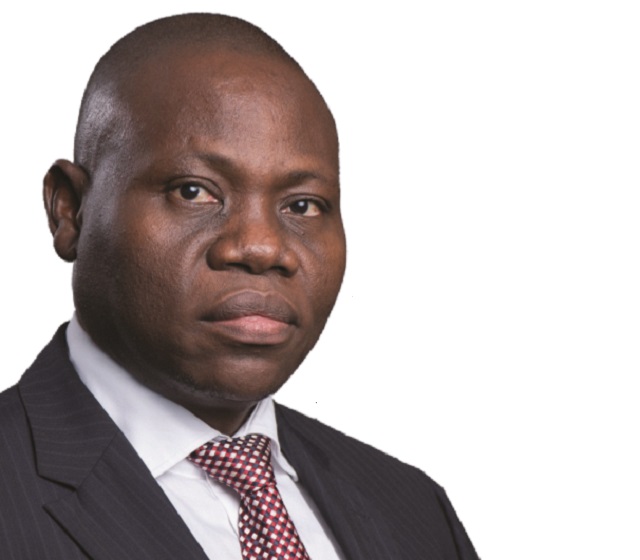
Performance of the economy likely to determine profitability going forward
Kampala, Uganda | JULIUS BUSINGE | Dfcu bank’s net profit more than quadrupled to Shs 114bn for the six months ending June 30 after the acquisition of Crane Bank but analysts remain cautious on whether the bank will maintain the bullish performance years ahead.
Analysts say the bank’s future prospects partly lies in the performance of the economy, which is projected to grow at 5.5% in FY2017/18, up from 3.9% last year driven by efficiency in implementation of public sector investments.
“The harsh business environment continues to be a big drag on the commercial banks profitability demonstrated by rising loan provisions, high cost of doing business among others which have got many bankers wondering about the earning prospects in this financial year,” said Stephen Kaboyo, a financial analyst and managing director at Alpha Capital Partners.
He said as the year progresses, the banking industry is likely to experience restructuring characterised by closure of branches and job losses.
Another analyst working with a brokerage firm told The Independent on August 24 that with a huge asset base, Dfcu’s managers need to position themselves to fit in and grow with the anticipated US$15 billion financing in oil and gas activities for the period 2018-2020.
“It is okay to have huge asset base but it is risky to invest it in a bad economic environment,” the analyst said
Dfcu officials, however, say they are optimistic to maintain the profitability above Shs 100 billion by end of 2017 and beyond after recording a jump in net profit from Shs 23 billion in the first half of 2016 to Shs 114 billion in the same period of 2017.
The optimism also comes at a time the bank’s other indicators recorded good performance in the same period.
For instance, its assets almost doubled from Shs 1.6 trillion to Shs 3 trillion, loans extended to customers increased from Shs759 billion to Shs 1.3 trillion, customer deposits went up from Shs 982 bn to Shs 1.8 trillion; customer numbers grew by 50%; branch network increased from 43 to 67 with over 100ATMs.
The bank officials, who spoke at a dinner organised for shareholders and bank customers on Aug. 15 at the Kampala Sheraton Hotel, said the good performance was largely attributed to the group’s acquisition of certain assets and liabilities of Crane Bank.
Kate Kiiza, the bank’s chief finance officer told The Independent on the sidelines of the dinner that the superb first half performance of the year has placed the bank in good position to do better in future.
She said that approximately Shs 60 billion was ‘fair value’ or profit that Crane Bank’s assets contributed to the total net profit of Shs 114 bn for the first half of 2017.
Kate remained tightlipped on how much the bank paid for these certain assets and liabilities acquired from Crane Bank. But said 300, 000 active customers, loans and advances now amounting to Shs 500bn, customer deposits (amounting to Shs 480 bn), overdrafts, physical assets, furniture, government securities and a few long term loans from European Investment Bank and The Agricultural Business Initiative (aBi) are some of the assets they acquired and expected to contribute to good performance of the bank going ahead.
Minority shareholders of Dfcu limited and former Crane Bank shareholders and sympathisers still question the secretive manner in which the Bank of Uganda passed on some Crane Bank assets and liabilities to Dfcu, a matter which is currently in court.
But Juma Kisaame, the managing director of dfcu said at the dinner that there are no worries for the bank regarding matters in court because the purchase agreement they have with Bank of Uganda protects them.
“When we were going into this matter we did due diligence,” he said, “We are just a buyer of some assets and liabilities of Crane Bank.”
Kisaame said the acquisition of Crane Bank “provided us with an opportunity to scale up”.
“We are not growing so fast; what we have taken on is manageable,” he said, “It was a good transaction.”
When asked by one shareholder on lessons learned from Crane Bank demise, Kisaame said that for a bank to survive in Uganda, its corporate governance, risk management and credit controls must be very good.
Optimism in bad economy
Dfcu’s good performance was least expected given the prevailing unfavourable macroeconomic environment.
Available data shows that the banking sector profitability dropped 4% year-on-year as at June 2017 compared to 18% growth in the same period last year. Industry client loans and advances growth remained under 1% in the same period.
The lending rate determinant, the CBR reached the lowest point of 10% (Jun2017) since its debut in July 2011 but it did not spur growth in lending for key sectors like manufacturing, real estate and construction which remained in negative as at the end of June 2017.
Unutilised credit limits in the industry sector exceeded Shs 1.7 trillion in June having moved from an average of Shs 1.2 trillion in 2015.
In specific terms, commercial banks average lending rates in local currency dropped 2% between December 2016 and May 2017 – which is an estimated annualised impact of Shs 100 billion on interest income off a loan book of Shs 6 trillion.
 The Independent Uganda: You get the Truth we Pay the Price
The Independent Uganda: You get the Truth we Pay the Price



